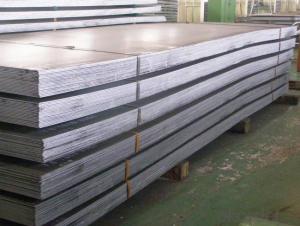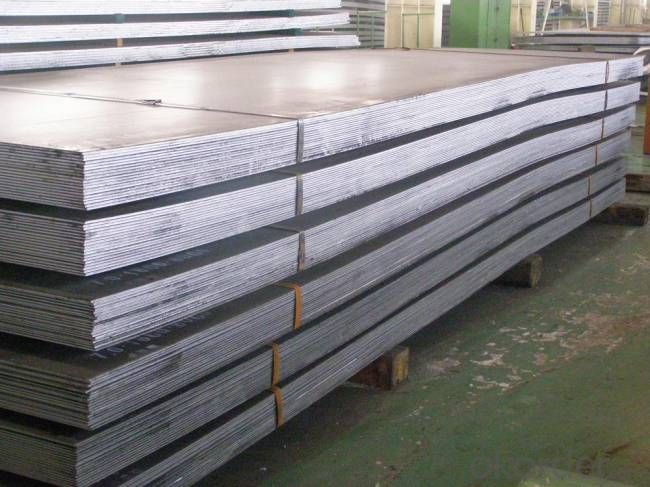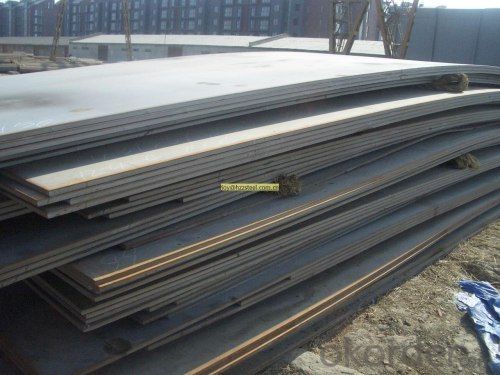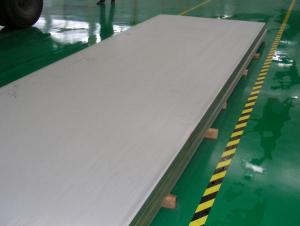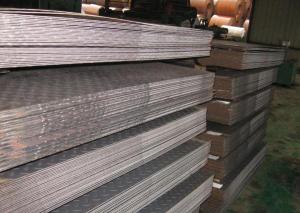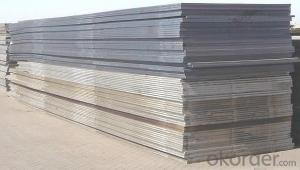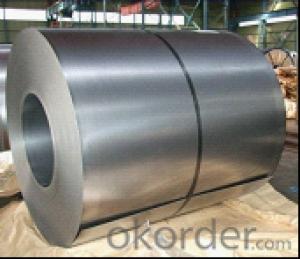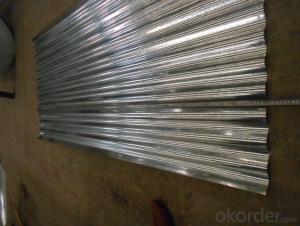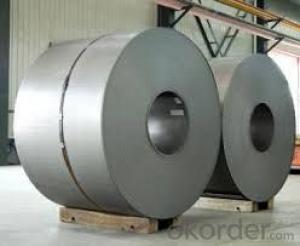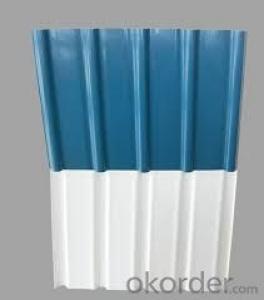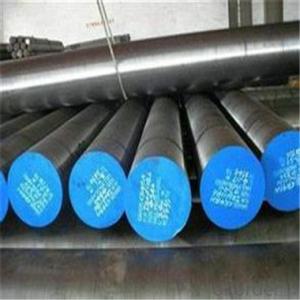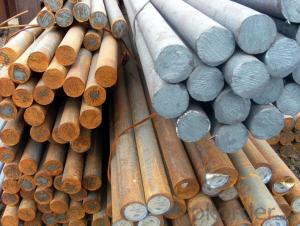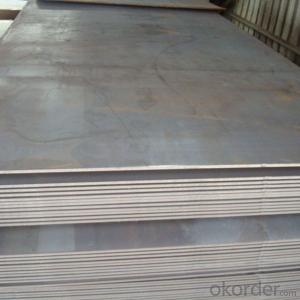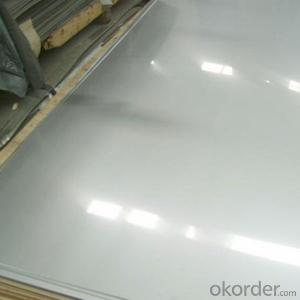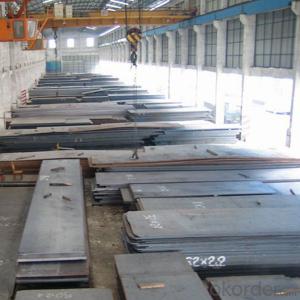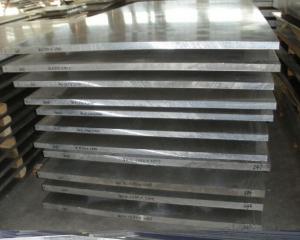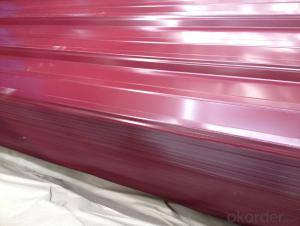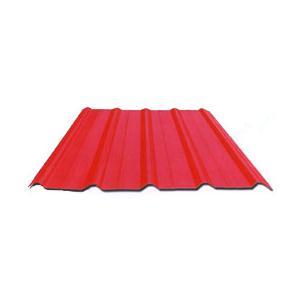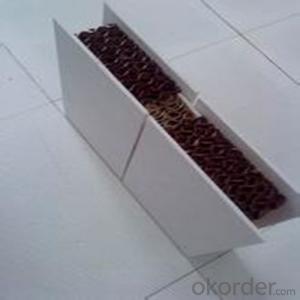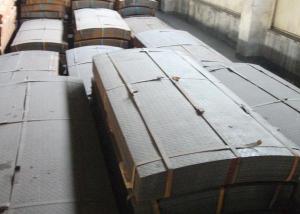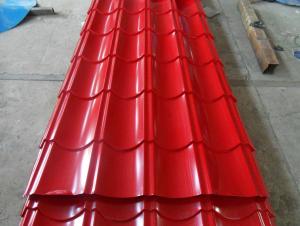S20C ,20#,DIN 1.0402,AISI 1020 Carbon Steel Plate from China
- Loading Port:
- Tianjin
- Payment Terms:
- TT OR LC
- Min Order Qty:
- 25 m.t.
- Supply Capability:
- 1111 m.t./month
OKorder Service Pledge
OKorder Financial Service
You Might Also Like
1.Structure of aisi 1020 Carbon Steel Plate Description:
According to the four digit alloy numbering system, 1020 Steel is a Hot Roll Chemistry Plate whereby "10" designates a basic plain carbon steel and "20" designates the approximate carbon content. HR 1020 steel is a general purpose, mild, low-carbon steel with good overall, structural steel properties.
2、Main Feature of the aisi 1020 Carbon Steel Plate:
• High manufacturing accuracy
• High strength
• Small inertia resistance
• Strong heat dissipation ability
• Good visual effect
•Reasonable price
3、Aisi 1020 Carbon Steel Plate Images:
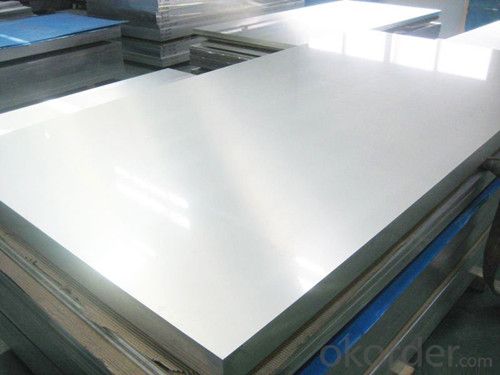
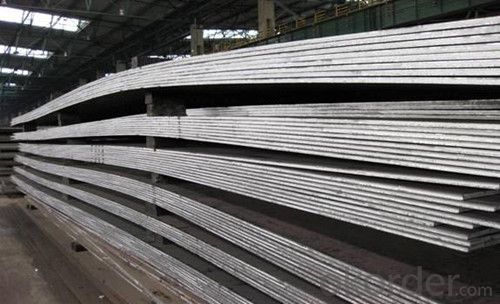
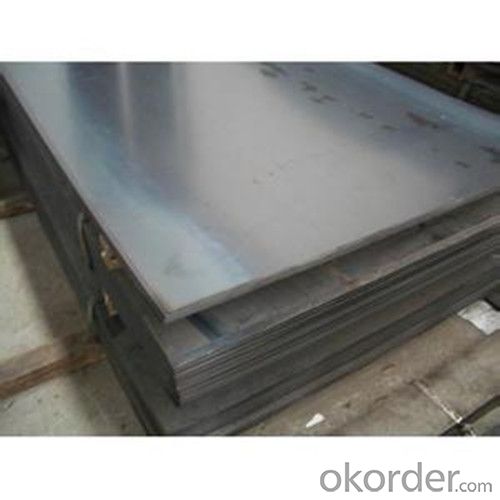
4、Aisi 1020 Carbon Steel Plate Specification:
| Grade: | S235jr S275jr S355jr SS400 Q235 Q345 ASTM A36 |
| Size: | 1.8 -100x1000 -3000x2000mm |
| Thickness: | 1.8-100mm |
| Width: | 1000-2500mm |
| Length: | 2000-12000mm as request |
| Mill: | qualified steel mill in China |
| Bundle weight: | max 4mt or as request |
| Certification: | API&ASTM Standard |
5、FAQ of aisi 1020 Carbon Steel Plate:
①How to guarantee the quality of the products?
We have established the international advanced quality management system,every link from raw material to final product we have strict quality test;We resolutely put an end to unqualified products flowing into the market. At the same time, we will provide necessary follow-up service assurance.
②How long can we receive the product after purchase?
In the purchase of product within three working days, We will arrange the factory delivery as soon as possible. The pecific time of receiving is related to the state and position of customers.
③ How can we get more information?
You can contact us by Email or call us directly and we will do our best to give you valuable information as much as possible but this service is not available on weekends.
- Q: What are the different types of steel sheet finishes for automotive applications?
- Automotive applications commonly utilize various types of steel sheet finishes. These finishes are applied to the surface of the steel sheet for the purpose of enhancing its appearance, durability, and resistance to corrosion. The mill finish, for instance, is a natural finish that the steel sheet attains after undergoing hot or cold rolling. It possesses a dull gray appearance and is typically employed in applications where aesthetics are not of paramount importance. On the other hand, the galvanized finish is a favored choice, whereby a layer of zinc is coated onto the steel sheet to safeguard it against corrosion. This finish exhibits exceptional resistance to corrosion and is frequently utilized in automotive body panels and structural components. Another option is the painted finish, which involves coating the steel sheet with a layer of paint. This finish improves both the aesthetics and corrosion protection of the steel sheet. Painted finishes are available in a variety of colors and textures, offering customization and branding possibilities. Furthermore, specialized finishes, such as the electro-galvanized finish, are also available. This finish involves the application of a thin layer of zinc to the steel sheet through an electroplating process. It provides enhanced corrosion resistance and is commonly employed in automotive parts that necessitate a high level of rust protection. Lastly, the brushed or polished finish entails mechanical polishing of the steel sheet surface to create a smooth and reflective appearance. This finish is often used for decorative purposes in automotive applications, like trim or accents. In conclusion, the range of steel sheet finishes for automotive applications includes mill finish, galvanized finish, painted finish, electro-galvanized finish, and brushed/polished finish. Each finish offers distinct advantages in terms of appearance, durability, and corrosion resistance, enabling manufacturers to select the most suitable option for their specific automotive application.
- Q: What is the difference between a perforated and non-perforated steel sheet?
- The main difference between a perforated and non-perforated steel sheet lies in their respective designs and functionalities. A perforated steel sheet is characterized by having small holes or perforations evenly distributed throughout its surface. These holes can be of different shapes and sizes, depending on the specific application requirements. The primary purpose of a perforated steel sheet is to allow for the passage of air, light, sound, and liquids through the sheet, while still maintaining its structural integrity. This makes it highly suitable for applications where ventilation, filtration, or visibility is essential. Perforated steel sheets are commonly used in industries such as architecture, automotive, manufacturing, and construction, where they are employed for various purposes, including acoustic panels, protective barriers, decorative elements, and filter screens. On the other hand, a non-perforated steel sheet does not have any holes or perforations on its surface. It is a solid sheet of steel that is typically used for applications where strength, durability, and resistance to impact or abrasion are important factors. Non-perforated steel sheets are often utilized in structural engineering, machinery, shipbuilding, and heavy-duty equipment manufacturing, as they provide a solid and reliable surface for load-bearing and other demanding applications. In summary, the difference between a perforated and non-perforated steel sheet lies in their design and functionality. Perforated steel sheets have small holes throughout their surface, allowing for the passage of air, light, sound, and liquids, while non-perforated steel sheets are solid sheets without any holes, providing strength and durability for heavy-duty applications.
- Q: What is the average thermal conductivity of steel sheets?
- The thermal conductivity of steel sheets can differ based on multiple factors, including the specific type or grade of steel, its composition, and temperature. However, on average, steel sheets have a thermal conductivity ranging between 15 and 30 Watts per meter-kelvin (W/m·K). This signifies their effectiveness in conducting heat and facilitating the efficient transfer of thermal energy across their surfaces. It should be emphasized that the precise thermal conductivity of a particular steel sheet can be determined through laboratory testing or by referring to the manufacturer's technical specifications.
- Q: How do steel sheets perform in chemical resistance?
- Steel sheets generally have good chemical resistance due to their high corrosion resistance. The presence of alloying elements such as chromium, nickel, and molybdenum enhances their ability to withstand exposure to various chemicals. However, their performance may vary depending on the specific chemical and concentration involved. It is always advisable to consult the steel manufacturer or refer to corrosion resistance charts for accurate information on a case-by-case basis.
- Q: Can steel sheets be used for agricultural fencing or enclosures?
- Yes, steel sheets can be used for agricultural fencing or enclosures. They are durable, strong, and provide excellent security. Steel sheets can be welded or fastened together to create a sturdy barrier that can withstand the elements and keep livestock contained. Additionally, steel sheets can be easily customized to suit specific fencing or enclosure requirements.
- Q: Can the steel sheets be easily engraved or etched?
- Yes, steel sheets can be easily engraved or etched. Engraving or etching on steel sheets is a common practice in various industries, such as automotive, aerospace, and jewelry. This process involves using specialized tools and techniques to create intricate designs, patterns, or text on the surface of the steel sheets. The hardness and durability of steel make it suitable for engraving, as it can withstand the pressure and cutting force required to create detailed engravings. Additionally, the smooth surface of steel sheets ensures precise and clear etching results. However, it is important to note that the ease of engraving or etching may vary depending on the type and grade of steel being used.
- Q: Can steel sheets be used for storage containers?
- Certainly, storage containers can indeed utilize steel sheets. Steel, being an incredibly robust and long-lasting substance, possesses the ability to endure substantial burdens and adverse weather conditions, rendering it exceptionally suitable for storage containers. It provides exceptional safeguarding against dampness, pests, and theft. Steel containers are extensively employed across a multitude of sectors, namely shipping, construction, and warehousing. Moreover, they are highly favored for transient storage resolutions, as they can be effortlessly transported and stacked. Furthermore, steel containers can be tailored to specific storage requirements through the incorporation of diverse accessories such as doors, windows, and ventilation systems.
- Q: Are steel sheets suitable for railway applications?
- Yes, steel sheets are suitable for railway applications. They are commonly used in the construction of railway tracks, bridges, and rolling stock due to their durability, strength, and ability to withstand heavy loads and harsh weather conditions. Steel sheets also provide excellent resistance to wear, corrosion, and fatigue, making them a reliable choice for railway infrastructure.
- Q: Can steel sheets be used for automotive manufacturing?
- Yes, steel sheets can be used for automotive manufacturing. Steel is a widely used material in the automotive industry due to its strength, durability, and cost-effectiveness. Steel sheets are commonly used in various automotive components such as body panels, chassis, frames, and structural reinforcements. They provide the necessary strength and rigidity required for the safety and performance of vehicles. Moreover, steel sheets can be easily formed and molded into different shapes, making them suitable for complex automotive designs. Additionally, steel is readily available, making it a popular choice for automotive manufacturers.
- Q: How are steel sheets protected during storage in humid environments?
- Corrosion prevention is a common practice used to protect steel sheets stored in humid environments. This involves implementing various measures to minimize the steel sheets' exposure to moisture and humidity, which are the main contributors to corrosion. One effective method is applying a protective coating to the steel sheets. This coating acts as a barrier between the steel and the surrounding moisture, preventing direct contact and reducing the risk of corrosion. Depending on the specific requirements and conditions of the storage environment, different types of coatings, such as paint, oil, or specialized corrosion-resistant coatings, can be used. In addition to protective coatings, steel sheets can also be stored in a controlled environment with regulated temperature and humidity levels. This helps to reduce the amount of moisture in the air surrounding the steel sheets, thereby decreasing the likelihood of corrosion. Dehumidifiers or climate-controlled storage facilities can be utilized to achieve this controlled environment. Proper handling and packaging of the steel sheets also play a crucial role in their protection during storage in humid environments. It is important to store the sheets in a manner that allows for adequate airflow and ventilation to minimize moisture accumulation. Additionally, packaging materials, such as plastic wraps or moisture-resistant packaging materials, can provide an extra layer of protection against moisture. Regular inspection and maintenance are essential to ensure the ongoing protection of steel sheets during storage in humid environments. This includes regularly checking for signs of corrosion or damage and promptly addressing them to prevent further deterioration. In conclusion, a combination of protective coatings, controlled storage environments, proper handling, and regular maintenance are necessary to safeguard steel sheets from the negative effects of humidity and moisture during storage.
Send your message to us
S20C ,20#,DIN 1.0402,AISI 1020 Carbon Steel Plate from China
- Loading Port:
- Tianjin
- Payment Terms:
- TT OR LC
- Min Order Qty:
- 25 m.t.
- Supply Capability:
- 1111 m.t./month
OKorder Service Pledge
OKorder Financial Service
Similar products
Hot products
Hot Searches
Related keywords
